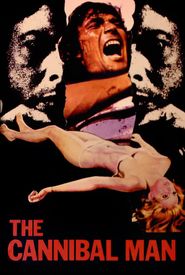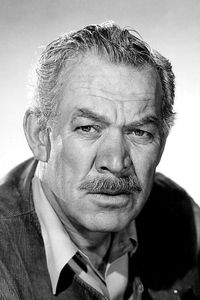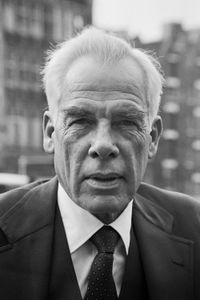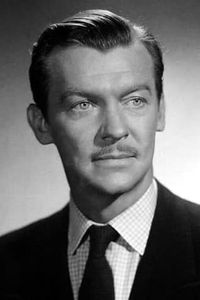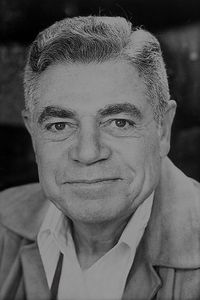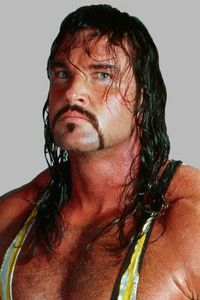Vicente Parra's fledgling career in the theatrical realm was initially characterized by his professional affiliations with renowned companies, including the esteemed Luis Prendes and the accomplished Amparo Rivelles, where he diligently refined his craft and garnered priceless expertise. Simultaneously, he started to make appearances in modest film roles, thereby establishing a foundation for his subsequent triumphs in the cinematic sphere.
It wasn't until the year 1949, when Parra had reached the tender age of 18, that he made his official debut on the big screen, thanks to the wise guidance and mentorship of the renowned Spanish film director Ramón Torrado, who gave him his big break in the film "Rumbo".
In the mid-1950s, a transformative period in the career of the talented actor unfolded, marked by a surge in popularity stemming from his involvement in Francisco Rovira Beleta's 1956 cinematic masterpiece, El expreso de Andalucía.
This noteworthy achievement was swiftly followed by his most iconic and enduring role to date, the portrayal of Spanish King Alfonso XII in Luis César Amadori's 1958 film, ¿Dómde vas, Alfonso XII?. The profound impact of this performance was multifaceted, solidifying Parra's position as a rising star within the Spanish film industry and further cementing his reputation as a master of his craft.
The remarkable and unprecedented success of the cinematic production ¿Dómde vas, Alfonso XII? was swiftly followed by the release of its sequel, ¿Dónde vas, triste de ti?, a film in which the talented Parra took center stage just two short years later. This extraordinary sequence of successes served to further entrench Parra's status as a leading figure in the Spanish film industry, his career continuing to flourish and reach new heights in the years that followed, as his reputation as a master of his craft was solidified and his name became synonymous with excellence in the world of Spanish cinema.
Noted Spanish actor, following a brief hiatus from his illustrious theatrical career, rediscovered his passion for the stage by establishing his own production company, thereby allowing him to participate in a wide range of productions, including the captivating drama "Cita en Senlis" by Jean Anouilh in 1963, which showcased his exceptional acting abilities.
In the years that followed, he continued to impress audiences with his versatility, taking on emotionally charged roles in productions such as "Cara de plata" in 1967, and "Sólo Dios puede juzgarme" in 1969, a powerful play written by Emilio Romero.
Additionally, he brought a new level of depth to his performances with his portrayal of complex characters in thought-provoking dramas such as Graham Greene's "El amante complaciente" in 1969, a year that also saw him take on the critically acclaimed role of Sigmund Freud in "Hilo rojo", a production that cemented his status as a master of his craft.
Throughout his illustrious career, he has consistently demonstrated his ability to bring characters to life in a way that captivates audiences, and his performances in these productions are a testament to his enduring talent and dedication to his craft.
As a result of his tireless efforts, he has established himself as one of the most respected and sought-after actors in Spain, and his productions continue to be celebrated for their emotional depth, intellectual complexity, and sheer entertainment value.
In the dawn of the 1970s, he embarked upon a deliberate and sustained attempt to reinvigorate his stagnating career by tackling a demanding and intricate character role, that of a psychopath, in the 1972 Spanish thriller "La semana del asesino", a cinematic endeavour that was meticulously directed by the illustrious and renowned filmmaker Eloy de la Iglesia.
As this landmark performance unfolded, it became clear that the artist had embarked on a bold and daring journey, one that would set him apart from his earlier work and showcase his remarkable range as a thespian. With unbridled passion and unwavering commitment, he dove headfirst into the complex and troubled persona, expertly capturing the intricate nuances of the character's psyche and imbuing the role with a sense of raw, emotional intensity. The result was a cinematic masterpiece that left a lasting impression on audiences, a testament to the artist's remarkable ability to tap into the darkest recesses of the human experience and bring forth a performance that was both haunting and mesmerizing.
The individual in question, despite experiencing moderate success with the 1970 film "La semana del asesino", continued to collaborate with renowned Spanish filmmaker Eloy de la Iglesia, this time taking on a dual role, not only acting in the 1975 thriller "Nadie oyó gritar" but also serving as its producer. This new project, which was eagerly anticipated by fans and critics alike, aimed to further push the boundaries of cinematic storytelling, offering an even more immersive and suspenseful exploration of the complexities and mysteries of the human psyche.
Notwithstanding his unwavering dedication and unrelenting pursuit of excellence, the cinematic endeavors "La semana del asesino" and "Nadie oyó gritar" failed to garner the widespread critical acclaim or commercial triumph that he had so fervently desired, thereby prompting him to persist in his quest for a role that would undoubtedly revitalize his professional trajectory and bring about a resurgence in his artistic fortunes.
As the trajectory of his artistic endeavors underwent a significant transformation, he gradually garnered widespread acclaim, ultimately reaching a prolific peak in his career. Throughout this pivotal period, he made notable appearances in a multitude of television series, with one notable instance being the 1985 production "Platos rotos". Furthermore, he seized the opportunity to take on a diverse array of theatrical roles, commencing with the 1977 production of "La jaula de las locas", followed by "Isabelita la Miracielos" in 1978, "Isabel, reina de corazones" in 1983, "La barca sin pescador" in 1984, and concluding with "El cianuro, ¿solo o con leche?" in 1985.

